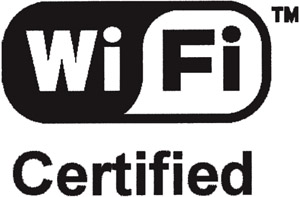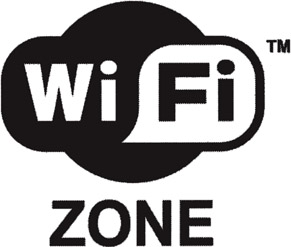A Bit of History
|
| < Day Day Up > |
|
Now it's time to take a journey into wireless data communications' past. While some would say that wireless data communications began with such primitive devices as waving lanterns by night or sending smoke signals, others would perhaps move it up a bit and begin the journey on May 24, 1844, the date Samuel Morse sent the message, "What hath God wrought?" from the old Supreme Court chamber in the United States Capitol to his partner in Baltimore.
| Note | An interesting historical tidbit is that Morse allowed Annie G. Ellsworth, the young daughter of a friend, to choose the words of the message, and she selected a verse from Numbers XXIII, 23: "What hath God wrought?" which was recorded via raised dots and dashes onto paper tape and then translated later by an operator. |
Still other historians might use 1896 as wireless data communications' starting point. That was the year Guglielmo Marconi had the idea that invisible electric waves could be used for telegraphic signaling and telegraphed Morse code two miles using "radiator" electric waves.
A more relevant history would probably begin with a group at the University of Hawaii who brought together network technologies and radio communications for the first time in 1971 with a wireless network known as the ALOHANET. The network connected seven computing sites across four islands. That timeline would then progress on to the 1980s, when another wireless networking pioneer group, consisting of early amateur radio hobbyists, designed and built Terminal Node Controllers (TNCs) that act much like today's telephone modems. The hobbyists then interfaced their computers to radio equipment, thus converting digital computer signals to ones that a radio could broadcast over the airwaves.
But it was in 1985 that perhaps the most important event in wireless networking history occurred. That is the year that the United States Federal Communications Commission (FCC) made commercial development of radio-based LAN components possible by authorizing the public use of the Industrial, Scientific and Medical (ISM) band, a set of radio frequencies centered around 2.4 GHz which are universally acknowledged to be available for use by wireless technologies.
| Note | Interestingly, the 2.4 GHz part of the ISM band had previously been called the "Junk Band" because, years before, 2.43 GHz was allocated for use by microwave ovens and no one ever expected that any application would "co-occupy" a band filled with microwave oven emissions. |
The ISM band is very attractive to wireless network vendors because it provides a part of the spectrum upon which to base their products, and end-users do not have to obtain FCC licenses to operate the products. This FCC action provided the impetus for the development of wireless LAN components, which led to today's Wi-Fi phenomenon.
The 1980s also provided one other incentive for wireless networking-the laptop computer and other small, portable computing devices, such as handheld computers and personal digital assistants (PDAs). Today, these are the typical computing devices used to communicate with Wi-Fi networks.
In 1990, NCR and Motorola began shipping wireless network interface cards (also known as wireless NICs, wireless adapters, or wireless PC cards) and soon other vendors followed suit. Without a standard, however, vendors began developing proprietary radios and access points. It wasn't long before the need for a wireless standard became evident. The IEEE 802 Working Group, the same Working Group responsible for wired LAN standards such as Ethernet (802.3) and Token Ring (802.5), stepped up to the plate and in July 1997 the 802.11 specification was completed.
In 1997, another Wi-Fi milestone occurred. That's the year the FCC allocated three 100 MHz unlicensed spectral bands between 5.15 GHz and 5.8 GHz (the "U-NII bands"). As with the ISM bands, users can operate within the U-NII bands without a license, and to encourage innovation and free market forces the FCC has imposed virtually no restrictions on how this band is used, except for out of band emissions and transmission power levels. These are the same bands that 802.1la uses.
In 1999, the Wi-Fi Alliance, a nonprofit organization originally formed as the Wireless Ethernet Compatibility Alliance (WECA), took on the task of certifying equipment manufactured by its membership as conforming to 802.11b standard (it later added 802.1 la, and now had added 802.11g, to its certification program). To that end, the Wi-Fi Alliance has instituted a test suite that defines how member products are tested to certify that they are interoperable with other Wi-Fi Certified products. Products awarded the Wi-Fi Certified logo have undergone strict, rigorous, and independent testing at one of four labs, located in Tokyo, Japan, San Jose, CA, Winnersh, U.K. or Taipei, Taiwan. Because of its rigorous testing standards, the Wi-Fi interoperability certification program has become the international standard for providing high-quality interoperability testing for 802.11-based products.
| Note | In case you are wondering, IEEE merely promulgates standards; it doesn't actually test for equipment interoperability. |
When the Wi-Fi Alliance's "Wi-Fi Certified" trademark is stamped on the packaging of wireless products (see Fig. 1.1), whether laptops and networking cards, hubs, access points, or whatever, it indicates compatibility with the 802.11 family of standards. A user with a "Wi-Fi Certified" product can use any brand of access point with any other brand of client hardware that is also certified. Typically, however, any Wi-Fi product using the same radio frequency (for example, 2.5 GHz for 802.11b, 5 GHz for 802.11a), will usually work with any other, even if not actually "Wi-Fi Certified."

Figure 1.1: The Wi-Fi Alliance's Wi-Fi Certified Trademark. Products bearing this trademark have been certified by the Wi-Fi Alliance as meeting its interoperability standards
The Wi-Fi Alliance is diligently keeping apace with the technological advances in the wireless arena. In late 2002, the Wi-Fi Alliance began to certify dual band 802.11a/b products in an effort to ensure that dual-band wireless LAN clients can efficiently find and hop onto the fastest network available. And, in early 2003, noting Wi-Fi's rapid advancement in the wireless service provider sector, the Wi-Fi Alliance launched a new program, which it calls the "Wi-Fi ZONE program," to create a global brand for easier recognition of public access HotSpots. The program includes setting a minimum standard of quality for HotSpots before they can label themselves a Wi-Fi ZONE or display the ZONE logo (see Fig. 1.2).

Figure 1.2: The Wi-Fi Alliance's Wi-Fi Zone brand.
Unlicensed spectrum has two main advantages:
-
Since there is no licensing procedure, deployment can be fast and inexpensive. This makes it practical to mass market inexpensive wireless systems (otherwise the cost of a single license would be a significant part of a system's overall deployment costs).
-
It's shared, which is essential for wireless systems that support devices that are moved from place to place, like laptops, PDAs, and phones.
The broad and uncoordinated use of unlicensed spectrum, however, raises management issues, such as:
-
It is in limited supply so overuse is bound to occur.
-
Some technologies conflict in their implementation and use, e.g. 802.11 b networks and 2.4 GHz wireless phones.
-
Technical and end-user competition can be momentarily problematic.
-
Incompatible technologies are built on specific frequencies.
-
Special interests want to claim and license it as their own resource. So far, cooler heads have prevailed.
Maintaining or expanding this resource and allowing innovative engineers to solve many of the problems that arise due to the growing popularity of Wi-Fi can achieve greater public good.
The Wi-Fi ZONE brand could be used in conjunction with whatever brands are also applicable to the venue provider, e.g. Starbucks Coffee shops could show the Wi-Fi ZONE brand along with the T-Mobile logo to indicate they have public wireless access.
That is just the first phase of the Wi-Fi Alliance's ZONE program. The second phase is slated to include use of what it calls "the Wi-Fi ZONE Finder tool," a searchable database of qualified HotSpots (similar to what's available at www.80211hotspots.com). For more information on the Wi-Fi ZONE program visit www.wi-fizone.org.
|
| < Day Day Up > |
|
EAN: 2147483647
Pages: 273